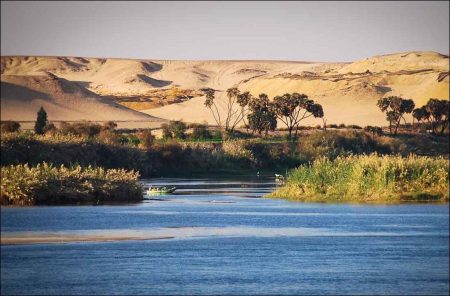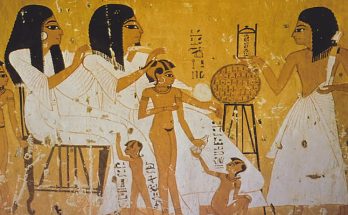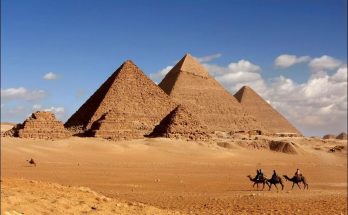From Aswan to the sea the gradient of the Nile averages only 1:13, 000 (1 meter to 13 kilometers), as compared to 1:11, 000 in the narrow Nubian valley. A short distance downstream from Aswan the crystalline rocks that border the valley and outcrop in the river in northern Nubia disappear again beneath the Nubian sandstone.
The sandstone here also includes soft beds of clay, and the bordering plateau scarps recede, leaving space for the formation of alluvial beds which gradually develop northward into a continuous flood plain. The first alluvial plain of any considerable size is that of Kom Ombo, on the east bank about 25 miles north of Aswan. There, two trunk wadis, Kharit and Sha’it, debouch from the east and the valley widens eastward to a maximum of 10 miles, with the river flowing along its western edge. On the black fertile soil are the sugar cane plantations.
The sandstone ridge of Gebel Silsila, a strong fault scarp across the north edge of Kom Ombo, accounts for the existence of free plain. During the forming of the Nile valley this rock barrier held back the water discharged by the Kharit and Sha’it wadis from the Red Sea Mountains and later by the Nile itself from its upper sources. The main drainage of the basin then was through a broad channel east of Gebel Silsila.
This channel was eventually choked with alluvial debris and is now an abandoned valley through which the railroad has been routed. The present channel of the Nile cuts through a five-mile stretch of gorges at the west end of Gebel Silsila. This is an almost barren section of the valley; only in narrow fringes of green toward the west-bank town of Idfu, 65 miles (104 km.) north of Aswan, does the flood plain begin again.
The location of Idfu is of special interest because at this point the flood plain of the Nile begins to widen. From here on, the arable, irrigated land extends continuously all the way to the delta, bordering the river on both sides, but generally much wider on the west side than on the east. Since ancient times important caravan tracks have connected both the Eastern and Western deserts with the valley at Idfu.
Visits: 135



